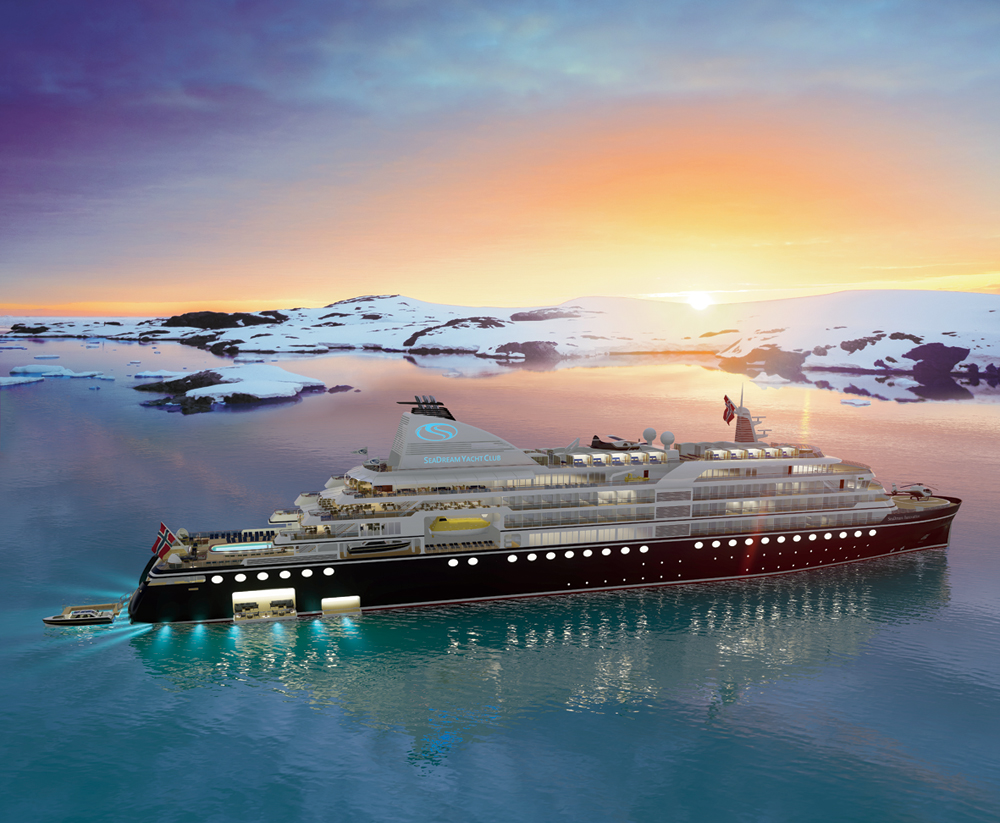Norwegian cruise operator Hurtigruten has put the first full-blown, 500-passenger cruise ship that runs partially on battery power on the water this month. What is more, it plans to add two more such ships, the second named Fridtjof Nansen and a third, yet unnamed, to its fleet over the next two years. The idea is to be able to cut emissions in general and do so sufficiently to be able to sail in to the polar regions that are currently off limits for smoke-spewing diesel-burners.
Meanwhile, another Norwegian luxury cruise company, SeaDream, has lined up its first hybrid luxury yacht, the SeaDream Innovation, for commission in 2021. This new ship will not only be able to supplement its peak power needs with electricity, it will also be able to cruise for up to three hours on battery power alone, allowing it to go into restricted Arctic regions without making a noise or leaving any other footprint in the region.
On a smaller scale but with much the same idea, the 24m-long catamaran Brim Explorer, which can take 140 passengers, will make its first commercial trip next month. It is an energy-efficient and silent hybrid electric ship. The plan for this marine vehicle is to operate north of the Arctic Circle along the coast of Norway. This boat has one of the longest run capacities on clean energy — it can operate only on battery power for up to 10 hours at a cruising speed of 10 knots — and can be charged at any port.
Electric and diesel-electric hybrid boats seem to be getting popular as vehicles for going into environmentally sensitive regions. Also, global warming has opened up to cruise ships places in the Arctic that were earlier the domain only of icebreakers. So there is a growing demand for amenities that were not even expected in the earlier gritty seafaring vessels that were venturing into these waters. Simultaneously, batteries, too, have become sufficiently energy-dense for them to store enough to propel big ships.
About Roald Amundsen, Hurtigruten chief executive Daniel Skjeldam has said, “The engines run mainly on marine gas oil, the ship’s battery pack enables it to run solely on batteries for around 45 to 60 minutes under ideal conditions.”
The company estimates that the battery pack will reduce fuel consumption and save about 20 per cent in carbon dioxide emissions compared to if the ship was operating on marine gas oil alone.
“It’s designed to take excessive energy from the engines and put into the battery when the ship doesn’t need it, and put it back into the engine when the ship needs it — it is a way of reducing emissions significantly without having charging stations available,” Skjeldam has said.
Electric marine vessels aren’t entirely new. There are vessels that have been used for short routes because their batteries need charging after a fairly short haul when compared with a cruise, which can go on for weeks. What makes the Roald Amundsen significant is that it can recharge its batteries even when it is nowhere near a charging point.
SeaDream’s Innovation has been supported by $1.8 million from Enova, an organisation of the Norwegian Ministry of Climate and Environment responsible for the promotion of environment-friendly energy. “Batteries have entered the maritime sector, but until now there has been little experience to show in practice, especially in cruise ships,” says Enova CEO Nils Kristian Nakstad.
“When it comes to electricity production with surplus heat, land-based industry has shown what is possible, but at sea such solutions are currently used in a very limited way. We depend on more people developing and using these technologies the world needs.”
SeaDream Innovation will install an ‘Organic Rankine Cycle’ machine that takes waste heat from the engines and converts it to electricity. This can produce up to 150kW of electrical power and reduce fuel consumption and result in lower emissions.
Vessels such as ferries and the like that repeat their trips on short routes are likely to be easier to electrify since the weight of the battery pack that the ship will have to haul is going to be one of the deciders of how many ships take to this technology. And while the smaller Brim Explorer is one of those nearer the higher end at 10 hours, batteries last less in bigger ships.
As of now, like for cars, few places have charging infrastructure for boats and ships even in countries like Norway, which is at the forefront of the adoption of electric propulsion. Nonetheless, the electrification trend seems to be spreading out over the waters too.










